by Derek Davison
A week of increasing tension between Ukraine and Russia was given a terrible cap on July 17 when Malaysia Airlines Flight 17 (MH17), a Boeing 777 bound for Kuala Lumpur from Amsterdam, was apparently shot down over eastern Ukraine, killing all 298 people on board. The tragedy was another blow to Malaysia Airlines, whose flight MH370 disappeared, probably somewhere in the Indian Ocean, on March 8, but the larger concern with respect to the downing of MH17 has been the impact it will have on the crisis in Ukraine.
Immediate efforts were made to identify how the aircraft was shot down and who was behind the attack. US and Ukrainian officials were quick to claim that a surface to air missile had caused the crash, and on this point “independent aviation experts” seem to agree. Suspicion has centered on the theory that a Russian/Soviet-made SA-11 Buk mobile anti-aircraft missile was responsible for bringing the plane down. Prior to this, the only publicly known anti-aircraft weapons that had been used in this conflict were handheld units with much lower effective ceilings, which may help to explain why MH17 was flying over eastern Ukraine despite the ongoing fighting; it was at an altitude thought to be above any hypothetical threat.
Who’s Responsible?
But identifying exactly who shot the plane down is a bigger challenge, especially since all three of the most obvious suspects — the Ukrainian military, the Russian military, and the pro-Russia Donbas separatists — have all denied any responsibility for the incident. Russian media is heavily pushing the theory that the plane was shot down by the Ukrainians, either by a Ukrainian fighter plane that it claims was flying close to MH17 at the time of the incident or by one of a number of Buk batteries that it claims the Ukrainian military was operating in the area at the time of the incident. The latter theory has also been advanced by American reporter Robert Parry.
Assuming that NATO is correct in claiming that it has evidence of a renewed Russian military buildup along its Ukrainian border, there is a possibility that a Russian-operated Buk battery mistook MH17 for a Ukrainian military aircraft and shot it down. However, US officials seem to be convinced that it was the separatists who shot down the craft — Secretary of State John Kerry told CNN that the evidence “obviously points a very clear finger at the separatists.” That evidence includes satellite imagery that may show the path of the missile, recordings of what Kiev claims are phone calls involving top separatist leaders, and intercepts from Russian social media that suggest the rebels acknowledged shooting down what they believed was another military transport in the area where MH17 went down.
If it was the rebels who shot down the plane, it raises questions as to how they obtained the Buk battery in the first place. The separatists have taken small arms (including shoulder-launched anti-aircraft missiles) and vehicles from Ukrainian military outposts since the conflict began in March, and there is evidence that other weapons and equipment have been trafficked into eastern Ukraine from Russia. But the Buk system is considerably more powerful and advanced than anything the rebels were known to have in their possession. They may have seized a battery from the Ukrainian military, but Russian media reported in late June that Ukrainian separatists “took” a Buk system under Russian control, which could suggest either that they stole the battery or that it was supplied to them. Videos have surfaced online that claim to show a Buk battery or batteries in the rebel-held towns of Torez and Snizhne around the time that MH17 crashed, which reportedly conforms with what US satellite imagery has shown.
Worsening Crisis
The already difficult task of investigating the crash has been made almost impossible by the situation in eastern Ukraine. Under international aviation regulations Ukrainian authorities should take the lead in the investigation, but the Ukrainian government simply doesn’t control the part of the country where the aircraft’s wreckage now lies. For several days after the crash, separatists refused to allow investigators unfettered access to the crash site and to MH17’s data recorders without a ceasefire agreement from Kiev, which drew ire from a number of world leaders. Rebels were even observed loading bodies from the crash site onto trains and taking them away. On July 21, President Barack Obama called on Putin to compel the separatists to comply with the investigation, and the UN Security Council unanimously (including Russia) adopted a resolution demanding full access to the crash site. Malaysia’s Prime Minister Najib Razak later announced that the separatists had agreed to turn over the bodies and the data recorders to Dutch and Malaysian representatives, and that the investigators would henceforth have full access to the crash site.
The MH17 disaster was only the latest in a string of provocations that have raised the stakes in the area over the past week. On July 13, Russian authorities warned of “irreversible consequences” after the Russian village of Donetsk (which has the same name as the Ukrainian city that is one of the hubs of that country’s separatist rebellion) was struck by what Russia claimed was a Ukrainian artillery shell, killing one and injuring two. The following day, in an attack that foreshadowed the MH17 tragedy, a Ukrainian AN-26 military cargo plane was shot down near the Russian border. Ukrainian authorities claimed that the AN-26, like MH17, was flying too high to have been hit by portable anti-aircraft missiles, which has been disputed by analysts but which, if true, would again suggest the involvement of Russia or Russian weapons in the attack. Then, on July 15, an airstrike hit an apartment building in Snizhne, killing 11, with Kiev again accusing Moscow of perpetrating the attack even as the rebels pointed the finger at Kiev. Ukrainian forces reportedly took control of the Donetsk airport on July 21, suggesting that a major offensive was underway against one of the few remaining rebel strongholds.
If it can be proven that the separatists did shoot down MH17, especially if there is evidence that they did it with Russian support, it could lead to a significant increase in the amount of economic pressure that the US and EU are prepared to bring to bear against Moscow. Obama’s July 21 statement promised that there would be “costs” to Russia’s continued support of the separatists, on top of the new sanctions that the US levied on Russian banks, energy companies, and defense contractors on July 16, the day before MH17 was shot down. The fact that MH17 originated in Amsterdam and that most of its passengers were European could also spur stronger European sanctions than we’ve seen to date.
Photo: A memorial at the Amsterdam Schiphol Airport for the victims of the Malaysian Airlines flight MH17, which was reportedly show down while flying over Ukraine on 17 July 2014, killing all 298 people on board.

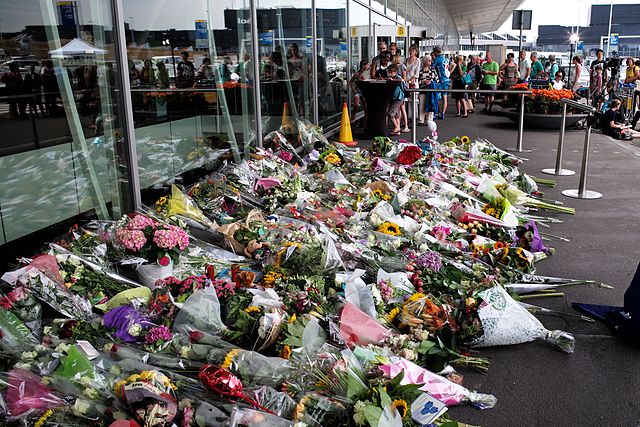
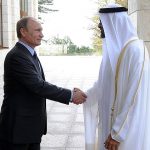
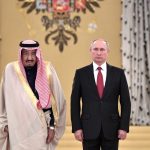
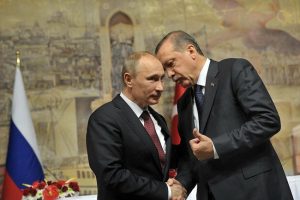
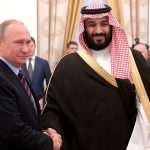
Considering how the Ukrainian issue started and who was/is behind it, one trying to make any sense of all this-at least at this point in time-is like throwing darts at a dart board while blindfolded, after being spun around 10 times and whistling Brahms 10th concerto in A-minor.
All you need to know is that Putin personifies a special kind of crazy. Why can’t he get mauled the next time he wrestles a polar bear?